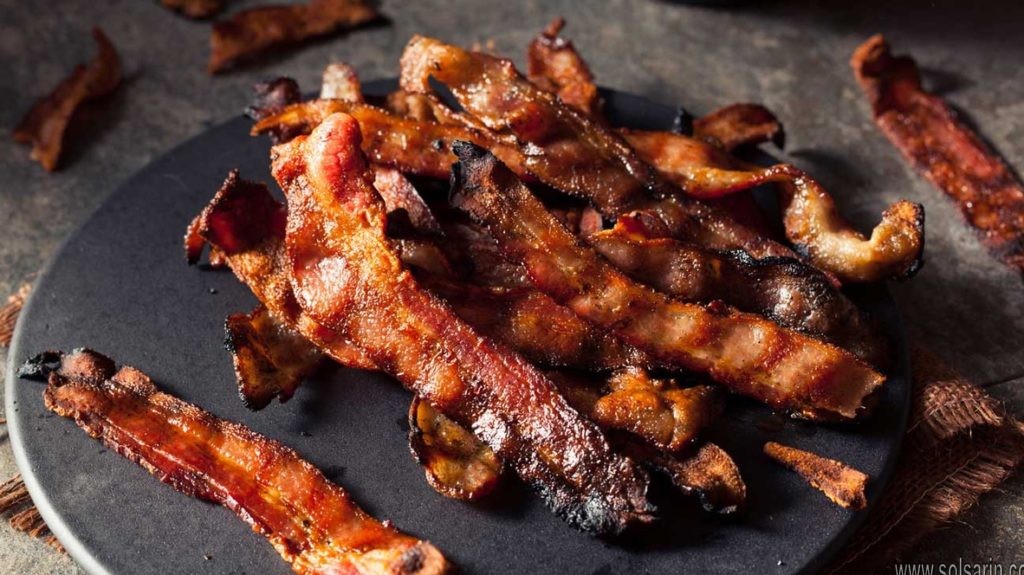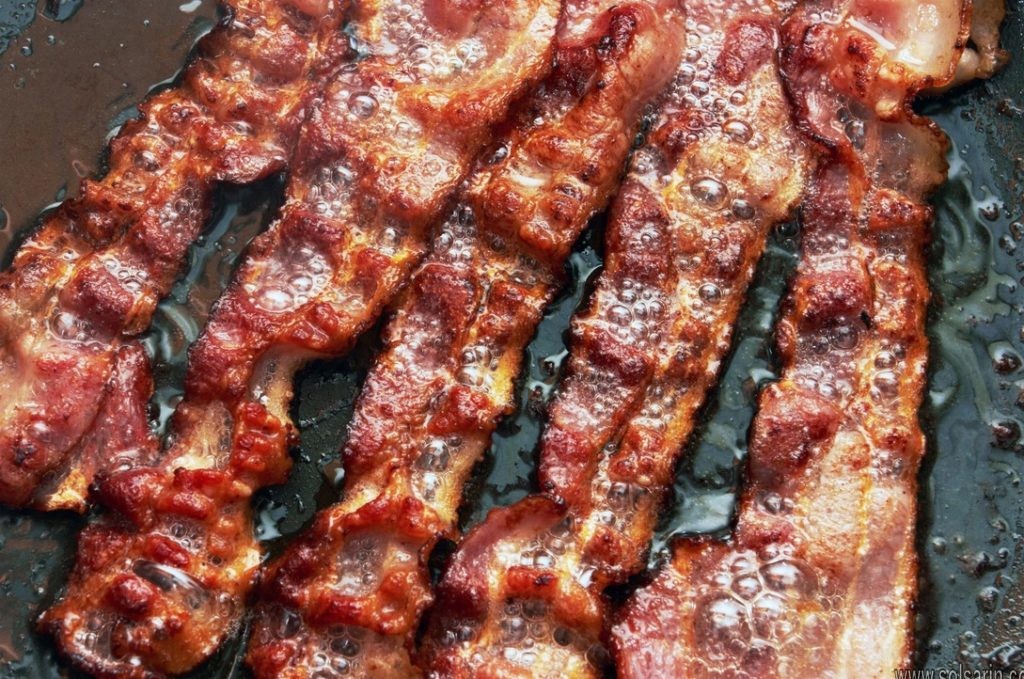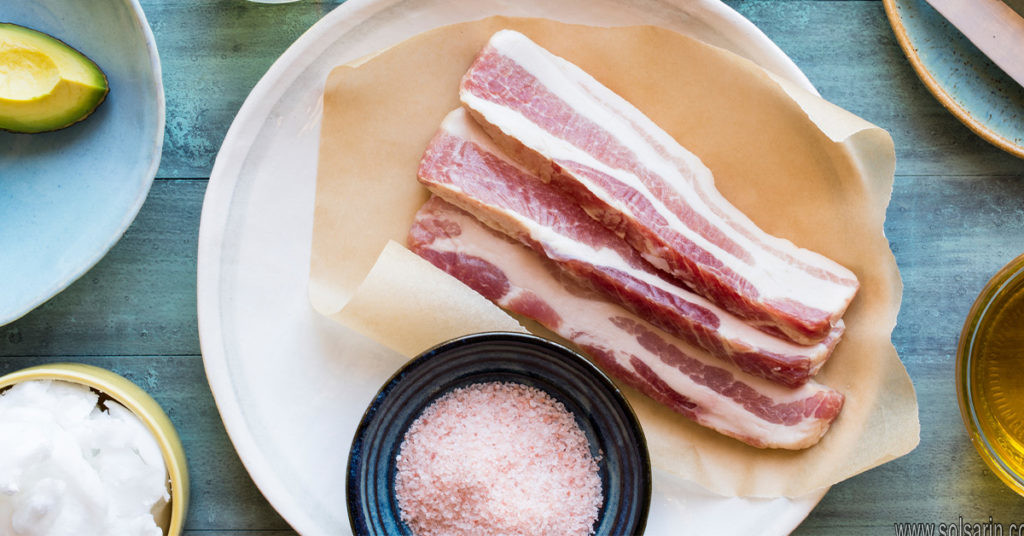how much bacon do americans eat a year?
national bacon day
Many may not realize that thousands of Americans annually celebrate National Bacon Day every December 30. Honoring a breakfast staple with a day of observance might seem odd, but bacon is not your typical food.
The tasty snack has become a cultural obsession and a fixture of American pop culture. Who can forget eight-year-old King Curtis on ABC’s Wife Swap running away when he is told he can’t eat bacon? Or Ron Swanson, after being served a rather meager-looking steak, ordering a waiter to “just bring me all the bacon and eggs you have”?
To help you better understand the majesty of bacon, we’ve compiled a list of 15 economic, historic, and health facts about this wondrous food.*
Americans spend $5 billion on bacon … annually



America is currently in the midst of a decades-long trend of “bacon mania.” In 2018, bacon accounted for $4.9 billion in US sales, up from $4.7 billion the previous year and an increase of more than 20 percent from 2012.
Research suggests there are cognitive benefits of eating bacon
Most health research focuses on bacon’s negative impact. (So typical, right?) However, some research shows positive health outcomes associated with bacon consumption. A University of North Carolina study, for example, found that choline, a micronutrient in bacon, is key to healthy brain development in unborn babies. You got that, moms? You have an excuse to eat bacon.
Bacon is environmentally friendly
Americans don’t appear to need more reasons to eat bacon (beyond its deliciousness), but they might have some. Turns out bacon and pork have a much smaller carbon footprint than beef. One recent study, for example, concluded that growing beef requires 28 times more land and 11 times more water than bacon and pork (as well as other foods such as eggs and chicken).
Bacon is 86 percent cheaper than it was 100 years ago
In 2014, Fox News reported that bacon prices hit “a new all-time high” after reaching “a whopping $6.11 per pound.” As bacon lovers worldwide already knew, the price, which soon fell when consumers and producers adjusted, was abnormally high—up 40 percent from just two years before. However, bacon wasn’t really more expensive than ever.
As Marian Tupy has shown, the price of bacon, when adjusting for wages and inflation, is about 86 percent less today than it was 100 years ago. (Think about this next time you’re at the grocery store selecting a package of delicious bacon, and give thanks to your free-market economy.) If Fox News had used real prices instead of nominal prices, they would have found that those “all-time high” prices were still a fraction of the real cost of bacon in, say, 1919, when the nominal price was $0.53 a pound and average nominal wages were $0.25 an hour.
Bacon is really nutritious
Bacon is high in saturated fat and contains additives such as nitrates and nitrites that cause concern among scientists who fear it could be linked to gastric cancer (more on that later).
However, overall bacon is a hearty and nutritious food packed with essential vitamins and nutrients. As Healthline points out, bacon contains:
Vitamins B1, B2, B3, B5, B6, and B12
37 grams of high-quality animal protein
89 percent of the Recommended Dietary Allowance (RDA) for selenium
53 percent of the RDA for phosphorus
Plenty of minerals such as iron, magnesium, zinc, and potassium
In fact …


There are fewer calories in three
slices of bacon than a can of pop
A serving of bacon is three average-sized slices. Each serving, the San Francisco Chronicle reports, contains 7.5 grams of protein; nine grams of fat (3.8 of which are saturated); 30 milligrams of cholesterol; 435 milligrams of sodium; and 120 calories. A 12-ounce can of Pepsi, meanwhile, has zero grams of protein and 150 calories.
How to cook bacons
, bacon. We use it in every meal, from breakfast straight through to dinner and even on into dessert. While it can seem like a messy endeavor, cooking bacon on the stovetop is the classic way to crisp up those delicious strips of smokey goodness and it’s dead simple to boot. Read on for our step by step guide, including tips for choosing a good pan, dealing with splattering, and getting rid of that lingering fried bacon smel
Why Cook Bacon on the Stovetop?
Cooking bacon on the stove top is how we did it when I was growing up, and it’s the method that’s most familiar to me. My mother had a long, rectangular cast iron griddle pan that fit over two burners and could cook up a whole pound of bacon at once. Frying up the bacon was often my job as a child.
The griddle had a trough etched into its perimeter which caught the grease and channeled it to a corner where I would suction it out with a bulb baster.
It was the perfect bacon cooking pan and I am still recovering from the fact that my mother sold it at a rummage sale a few years ago.



Bacan history
Bacon may be the U.S.’s current favorite pork product, inspiring countless 21st-century memes and t-shirt slogans, from “You had me at bacon” to “Keep calm and put bacon on.” But the passion for cured pork stretches far back through history—and to many other parts of the world.
Bacon in Ancient and Medieval Times
Salted pork belly first appeared on dining tables thousands of years ago in China. Pork curing methods spread throughout the Roman Empire, and Anglo-Saxon peasants cooked with bacon fat. Until well into the 16th century,
the Middle English term bacon or bacoun referred to all pork in general. The word bacon derives from various Germanic and French dialects, including the Old French bacun, Old High German bacho (meaning buttock) and Old Teutonic backe, which refers to the back. But the cut typically used to make bacon comes from the side, or belly,
of the hog. In modern England, a side of bacon is called a “gammon” and a thin slice of bacon is known as a “rasher”.
In the 12th century, a church in the English town of Great Dunmow promised a side of bacon to any married man who could swear before the congregation and God that he had not quarreled with his wife for a year and a day.
A husband who could “bring home the bacon” was highly regarded by the community for his forbearance.
Bacon in the New World
Queen Isabella sent eight pigs to Cuba with Christopher Columbus, but the National Pork Board credits Spanish explorer Hernando de Soto as the “father of the American Pork Industry.” He brought 13 pigs to the shores of the New World in 1539; within three years his herd had grown to 700. Indigenous peoples reportedly fell in love with the flavor and readily accepted pigs and pork products as peace offerings. By 1653, a rapidly expanding, free-roaming and unruly swine population nearly thwarted Dutch construction of a wall on Manhattan Island meant to keep the British and Indigenous peoples out of New Amsterdam.
Bacon on the Modern Table
In a health-conscious age, you might expect to find fatty bacon low on the list of preferred foods. But Americans are eating more pork now than they have in decades—and as anyone who dabbles in pork belly commodities can tell you, bacon can singlehandedly boost the pork market. Americans eat 70 percent of their bacon with breakfast,
but the crispy, salty meat also stars as a sandwich ingredient and a favorite of chefs in fine dining establishments— causing bacon shortages and price hikes at times. Still, bacon remains a bargain when it comes to adding flavor.
Bacon aficionados enjoy the cured meat in everything from classic dishes like chowders to more adventurous concoctions such as bacon ice cream, chocolate-covered bacon, and bacon jam. With low-sodium and lean varieties available, even a dieter can partake in moderation.
How to pick the best bacon
Here’s what to look out for when shopping for the healthiest bacon:
Watch your sodium. The FDA says sodium intake should be 2300 mg/day or less. Some bacon brands contain up to 20 percent of your daily value of sodium in just two slices.
Thick cut vs thin cut. Thick cut means more bacon in fewer slices. That means more sodium, more fat, more calories. One thing to watch with thick bacon is how you’re cooking it. Don’t crank up the heat super high for long periods, which can form more nitrosamines (the compounds WHO warns us about).
Sodium ascorbate means cheap “pumping” was used. The USDA requires sodium ascorbate to be added to bacon if it was “pumped”, in order to reduce the amount of free nitrate in the product (and reduce the resulting amount of nitrosamines). So if you see this ingredient on the label, you know the production practices were less than optimal.
Note the fat, but be realistic. It’s bacon. There’s going to be fat, especially in American bacon. While some brands have less fat than others, this macronutrient isn’t the most important thing to watch if you’re eating bacon.


Random Posts
- how many percent of alcohol in emperador light
- monica lewinsky blowing clinton
- paul ryan jewish
- how much alcohol is in smirnoff ice green apple
- dog constipation



